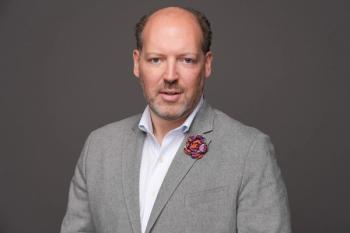
If I Were an Astronomer
I would not want to simply map the stars; I would also want to gaze upon them and contemplate the mystery of it all. Such is the 15-minute med check versus the essence of psychiatry.
PORTRAIT OF A PSYCHIATRIST
– Series Editor, H. Steven Moffic, MD
In 2015, psychoanalyst Christopher Bollas, PhD1 described in a New York Times
Dr Bollas was able to find ways to empathize with his patient’s psychotic experiences and, without medication, to restore her to sanity. Accounts such as this are not commonplace, yet they are remarkable and moving. Many in psychiatry will question such case reports. For example, did the patient really have schizophrenia? Was she actually “cured?” Was this a true account or just wishful thinking on the analyst’s part? What matters to me is the potential healthful impact an empathic approach can have on even the most severely ill patients.
Interestingly, two days after this article appeared, a reporter in the New York Times described the
Thinking back to those New York Times articles brings to mind a patient of mine. “Margie” was in her late 50s when I began treating her at a community mental health clinic. Diagnosed with schizophrenia, she had been in treatment for many years, surviving on social security disability payments. Appearing considerably older than her actual age, she wore garish make-up and dressed in shabby, dirty clothes. Conversation was difficult to maintain due to her odd, mumbling responses, and I suspected poor compliance with her antipsychotic medication.
Margie gradually improved her appearance and hygiene, began having coherent conversations with me, and exhibited a brightened mood. I assumed she had started taking her medication and guessed our relationship the reason. What I did not anticipate was her informing me that she read the New York Times. She had barely enough money to buy food, yet she bought the Sunday Times, which I had also begun reading. Pleasantly surprised by her revelation, I asked what articles she found interesting. While I don’t recall any specific articles, I do remember they were always human interest stories. What seemed important to me was not so much the content of what we talked about (though much can be learned from that), but the genuine sharing of our mutual interest. These moments added something meaningful to the “doctor/patient relationship.” Both of us, not just my patient, felt enriched by this experience.
Margie began working a few hours a week. She spoke of her deepening relationships with her sister and two cousins with whom she had reestablished contact. She did not go on to full-time work or develop an intimate relationship with someone, but her progress was real and sustained. I believe this example reflects the kind of change that can occur with the development of a good therapeutic relationship. It was not the psychoanalytic “talking cure,” perhaps, but our talking helped promote and maintain improvement.
I recall at one point, Margie told me a male co-worker had begun showing an interest in her. My initial reaction was to explore how she felt about this, encouraging her to tell me about their interactions. It quickly became clear that she didn’t want a romance with this man (also a mental health patient). In subsequent sessions I occasionally asked if her “wannabe suitor” was still in hot pursuit. The way I expressed myself, the look on my face, succeeded in making her laugh. She enjoyed describing his efforts and seemed relieved by my acceptance of her disinterest in a romantic engagement with this man. At the same time, I knew to be careful with humor: best to aim it not at the patient but at someone else, allowing the two of us to share a laugh.
I was fortunate to work at a clinic where patients were seen for half-hour appointments instead of the 15- to 20-minute ones referred to as “med checks.” Granted, I didn’t have the luxury of the 50-minute hour, but I found that I had enough time to get to know my patients, to do more than the routine assessment of the patients’ mental status and medication issues. Given the extra time allowed me to feel more connected to the person sitting across from me and enriched our therapeutic encounter. Naturally, the experience I had with Margie wasn’t the norm. I was not a miracle worker. But I escaped the “burnout” that our literature so often warns us about. I looked forward to appointments with patients like Margie and allowed myself to share parts of my own life when it felt appropriate.
What to share and when to share were challenges I felt made the work especially interesting for me. While I did not bare my soul or my personal conflicts, I did occasionally use humor and an anecdote from my own experiences to enliven sessions and deepen the bond between us. With patients who had difficulties accepting the need to take medication, I would sometimes go beyond exploring their reluctance and add that it had been difficult for me to accept taking medication for high blood pressure and elevated cholesterol. Such self-disclosure, in my mind, helped level the playing field in a way that fostered positive change in my patients.
My career moved from psychoanalysis and psychoanalytic psychotherapy to a clinic practice emphasizing diagnosis and medication management. However, I did not abandon my former training. I carried with me the empathic stance, the awareness of transference and countertransference, and the importance of maintaining boundaries, but I learned to add more of myself-my personality-to the treatment encounter. It made all the difference.
I am saddened by the trend of outsourcing talk therapy to psychologists and social workers. This robs psychiatrists of what attracted many of us to our field: the human dimension, the desire to understand and empathize with another. If I were an astronomer, I would not want to simply map the stars; I would also want to gaze upon them and contemplate the mystery of it all.
Disclosures:
DR SCHULMAN practiced psychiatry and psychoanalysis in Cincinnati, OH, for 39 years. In retirement he has published two novels about a psychiatrist,
References:
1. Bollas C. A Conversation on the Edge of Human Perception. New York Times. October 17, 2015.
2. Carey B. New Approach Advised to Treat Schizophrenia. New York Times. October 20, 2015.
Newsletter
Receive trusted psychiatric news, expert analysis, and clinical insights — subscribe today to support your practice and your patients.














